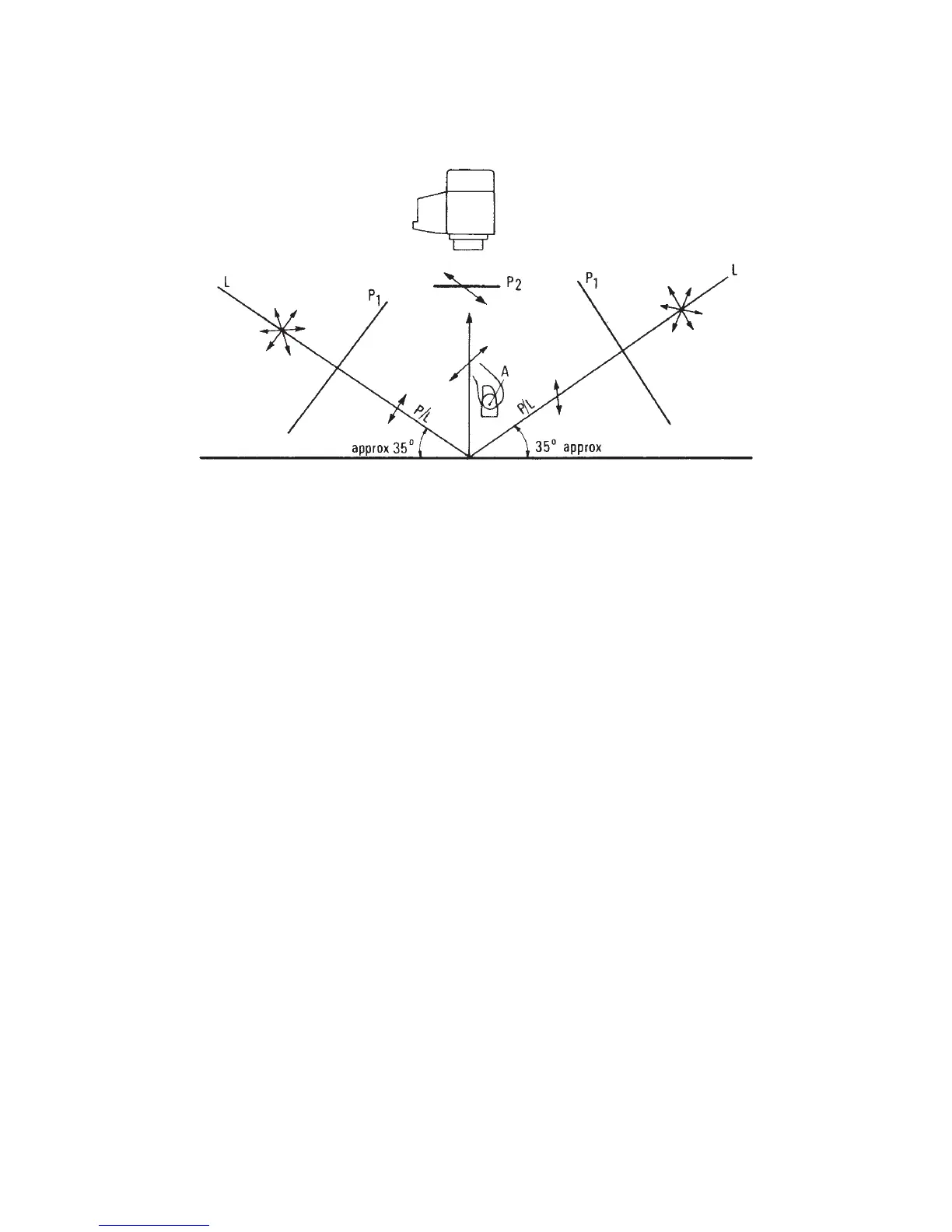Understanding Light and Filters 329
and when they are combined with long focal length lenses. Filters for long tele lenses must
be of the highest quality. A fi lter that is not perfectly optically fl at may have the effect of a very
weak lens element, which decreases the image quality and makes it impossible to focus the
lens at infi nity. The quality of fi lters becomes still more important when fi lters are combined.
Filters Between the Lens
Because the 30 mm Distagon fi sh-eye lens for the 503 and other V system cameras covers a
180-degree diagonal fi eld of view, it is impossible to attach fi lters to the front without cutting
into the diagonal fi eld of view. Filters can be attached to the rear of the front section and are
part of the optical design, which means that the 30 mm Distagon is designed to produce the
best sharpness with a fi lter or clear glass in the lens. Never use the lens without a fi lter or
clear glass. The rear ring of the lens is painted bright red to warn you that there is no glass at
the rear.
Gelatin Filters
Gelatin fi lters can be used in combination with the Proshade including the latest shade
VH60-95. Older shades were made for the 3-in. size only. The 3- or 4-in. sizes can be used in the
new shades made since 1991. The larger 4-in. sizes must be used with wide angle lenses, long
telephotos, and the 110 mm Planar. The 3-in. size can be used for lenses from 60 to 250 mm.
The fi lters should be placed into gelatin fi lter holders.
Figure 17-10 Copying setup. A simple setup for copying in polarized light consists of two lights
(L), on the left and right, illuminating the copy from the same angle of about 35 degrees. The
light from both lamps goes through the polarizing material (P1) so that the light falling on the
copy is polarized. A polarizing fi lter (P2) on the camera lens is turned to produce maximum
contrast. Exposure for tungsten lights is based on a refl ected or built-in meter reading off a
graycard (A) placed on top of the copy or the reading from an incident meter.

